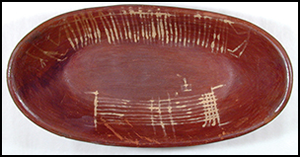Published online by Cambridge University Press: 15 August 2022

Early craft specialisation provides insights into the emergence of social complexity. Textile production also offers a lens through which specialisation can be recognised. Here, the authors present a detailed contextual and technological analysis of a large assemblage of textile-production tools from Tianluoshan, a waterlogged Middle Neolithic site in the Yangzi Valley, China. Using the chaîne opératoire approach, tools are identified, their roles in the production process explained and their significance explored. The results trace the production of textiles from spinning through loom weaving to fabric construction with needles. The use of a variety of fibre-based plants is suggested and tentative evidence for the early use of ground looms explored.
This article was originally published with a persistent spelling error. This has now been corrected and an erratum published.
Please note a has been issued for this article.